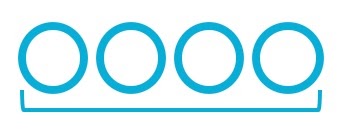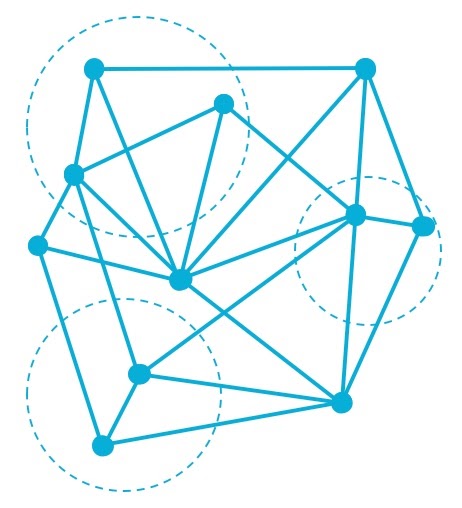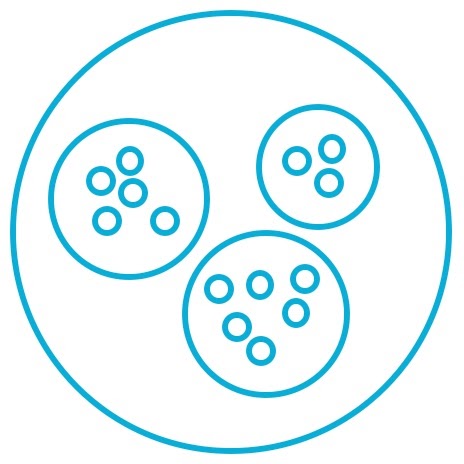A self-managing business model is not structureless; it does still adopt a guiding form. In his landmark study, Reinventing Organisations, Frederick Laloux describes three “Archetypes of Structure” that have emerged so far in the self-managing approach, or "teal" organisations as he labels them (see: "What are teal organisations?"):
Parallel Teams


Fully autonomous small groups, supported by team coaches, some external teams, and supporting roles within the parallel team itself. The most common team structure to have developed so far, this structure is likely to be of most use to large organisations with a short value chain: service industry, hospitals, public services, retail, schools etc.
Web of Individual Contracting
 A network of individuals making promises to their peers that outline the roles and commitments they will adhere to. This is a way to use expertise without creating a hierarchy. This structure is likely to be of most use to organisations with continuous and relatively stable processes such as the chemical industry, food processing, and long assembly line manufacturing.
A network of individuals making promises to their peers that outline the roles and commitments they will adhere to. This is a way to use expertise without creating a hierarchy. This structure is likely to be of most use to organisations with continuous and relatively stable processes such as the chemical industry, food processing, and long assembly line manufacturing.
Nested Teams
 Akin to a typical hierarchy in that it is specialised teams (“small circles”) exist within ever-larger teams (“large circles”). These larger circles that contain a collection of smaller circles, pulling them together. Those specialisations but decisions don’t go upwards as each circle has full autonomy over its area and a higher circle can’t overturn a lower one, so the hierarchy is one of purpose and complexity, not power. This structure is likely to be of most use to organisations with long and deep value chains, such as banking and pharmaceutical companies.
Akin to a typical hierarchy in that it is specialised teams (“small circles”) exist within ever-larger teams (“large circles”). These larger circles that contain a collection of smaller circles, pulling them together. Those specialisations but decisions don’t go upwards as each circle has full autonomy over its area and a higher circle can’t overturn a lower one, so the hierarchy is one of purpose and complexity, not power. This structure is likely to be of most use to organisations with long and deep value chains, such as banking and pharmaceutical companies.
Organisations need to think of these frameworks as ways of guiding, creating expectations, fostering communication, and maintaining accountability. Boundaries are not a bad thing in self-managing organisations: they help move an organisation in the direction that it wants to go. It’s staying true to their intention that keeps them purposeful and effective.
“…the size and type of activity the organization engages in will naturally call for one type of structure, just like surrounding terrain determines the shape of a lake."Frederic LaLoux, Reinventing Organizations
Comments
0 comments
Please sign in to leave a comment.